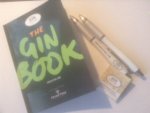The Gin Festival

By Alan Russell
- 1026 reads
I was not quite sure what to expect when we booked tickets for our selves and two friends to go to a 'Gin Festival' at The Pavilion in Bournemouth.
My previous encounters with gin have been with the standard brands such as Gordon's, Beefeater or the anonymous brands that used to be sold in tied houses. I have enjoyed a few gin and tonics at the end of a long hot summer's day. One pub landlord I worked for made me a pre Sunday lunch drink of one measure of gin, two of Dry Martini (which is why this post is in my Martini collection), ice and a top up of tonic water. It certainly worked as an appetite stimulant.
Another encounter, many years after the above two encounters, was at the Plymouth Gin distillery in, where else but, Plymouth. There I was told by the guide to forget all about the standard High Street brands which are classified as 'London Dry Gin' and savour an 'Old Tom Gin' like Plymouths which is now no longer available. The 'Old Tom Gins' are made with the usual juniper plus different mixes of herbs and spices.
The following words describe what an 'Old Tom Gin' is and come straight from the catalogue:
"An Old Tom is a soft, sweet and very traditional style of gin, brimming with gentle spice. They originated in the 17th century when exotic flavourings were added to cheap alcohol to cover up the taste. Don't worry though, modern day Old Tom's use high quality ingredients to make a modern approximation of this older style."
Plymouths, from memory, was made with juniper, citrus zest, cardoman and a couple of other spices. The guide told me that too really savour an 'Old Tom Gin' pour some into a brandy ballon, let your hands warm the glass and the drink just like the prelude to enjoyng a fine cognac and then sniff the blended aromas in the glass all fighting for supremacy in the battle of the scents. The cardoman will break through and then citrus zest will shoulder its way to your nostrils vying for olfactory attention. I cannot remember all the aromas held in that glass balloon but I can remember their impact on my senses. And then the tasting and wow! A clear spirit hit the pallet like a cognac. Sorry Gordons and Beefeater, you will no longer grace my drinks cupboard.
The guide at the distillery explained the reason for pink gin being such a popular drink with Royal Navy Officers. Pink gin is made with a measure or two of quality gin and a couple of drops of Angostura Bitters. These are an aromatic liquid laden with concentrates of all sorts of exotic herbs and spices. The pink gin savant will drink this as it is with clouds of the bitters wafting through the gin. It is permissible to add water but never very much. And the reason this drink was popular in the navy was because gin with added bitters was regarded as a way of ameliorating the affects of sea sickness. Officers had gin while the ratings had rum.
At the gin festival evet guest was given an entry badge, just like at the races, a large glass, a pen and booklet detailing all of the gins available on the day. The catalogue consisted of of 104 named gins wiith esoteric names like 'Bathtub', 'Jodhpur' (especially for horse riders as it has a bit of a kick), Pinkster and even a non-alcoholic gin.
In the booklet of 104 gins were some spare blank pages to write sampling notes on with the free pen presented at the entrance. Some people were religiously writing notes down about what they had tasted. I think the vast majority of attendees had the overall objective of having a few drinks with friends.
During the session we attended there wasn't really any central focus of activity. There were trade stands other than bars selling novelty items like gin hand soap, gin jam and drinks coasters. I guess if you have toast in bed with gin jam on it you would be 'having gin jam in your jymjams providing you wear any. We decided against the handsoap for fear of the bathroom smelling like a gin palace and guests thinking we were raging alcoholics. There was also a stall where clients could sign up to receive a monthly dose of specialist gins. The marketing objective was to put gin in the same category as wine, as something to be enjoyed and talked about with friends and family in much the same way.
Without that degree of central focus it felt a bit like going to the racecourse and standing in the bar when there was no racing taking place.
Been there, seen it, no T shirt just a glass, a pen and a catalogue of gins.
- Log in to post comments
Comments
I didn't realise gin (and rum
I didn't realise gin (and rum) were thought cures for seasickness, but what about the combination of drink and seasickness combined? I dread to think of the results.
- Log in to post comments


